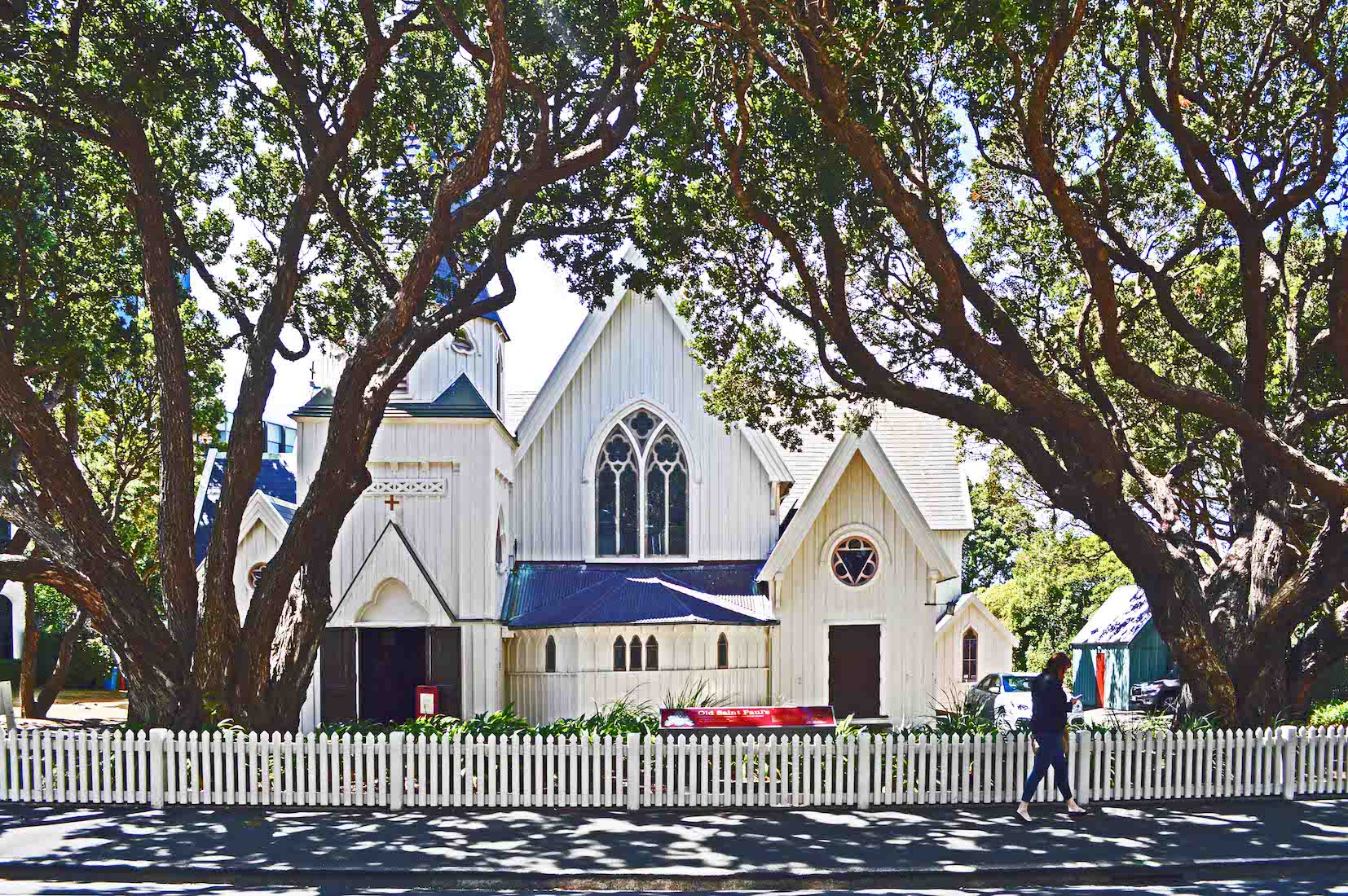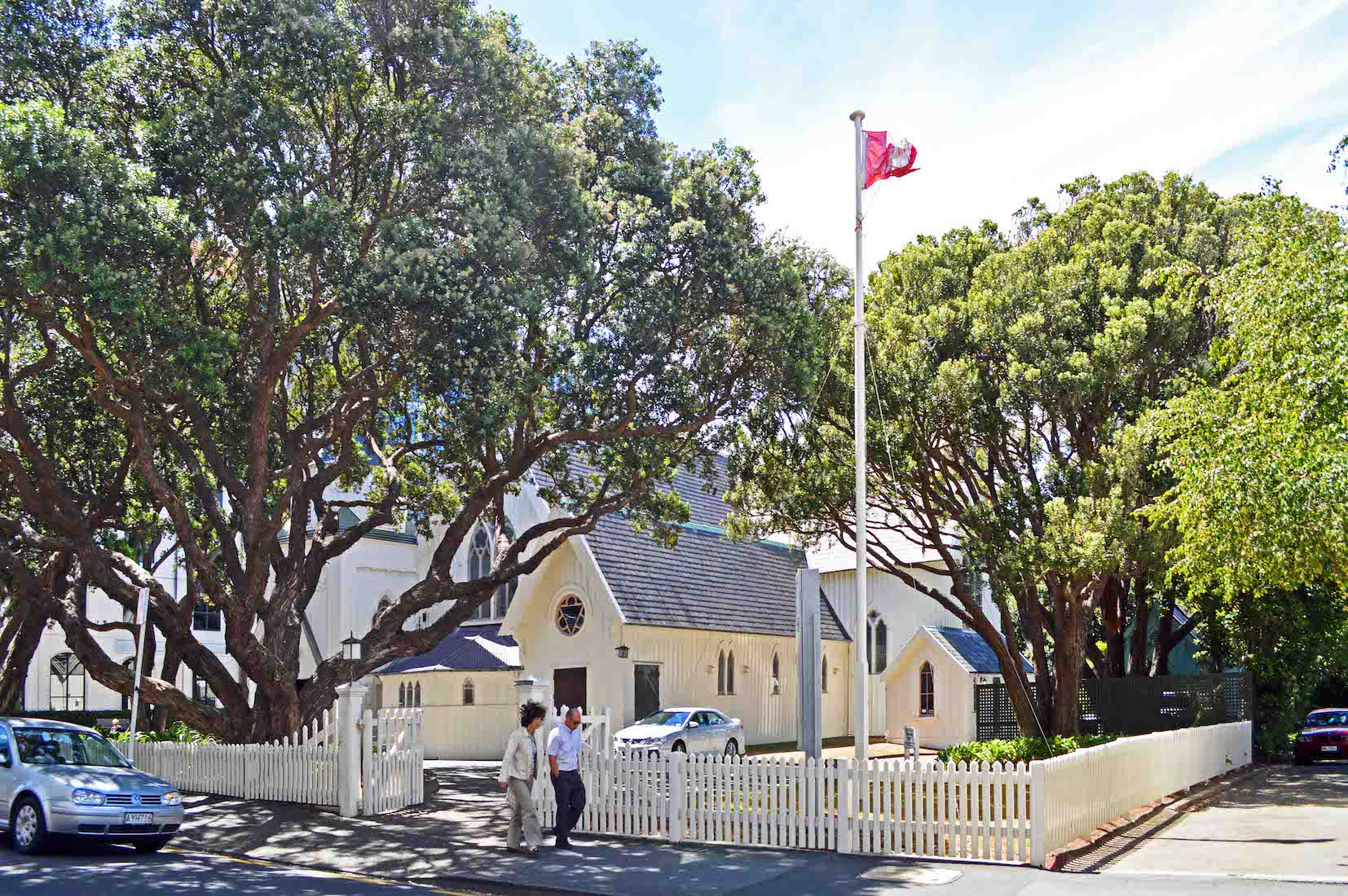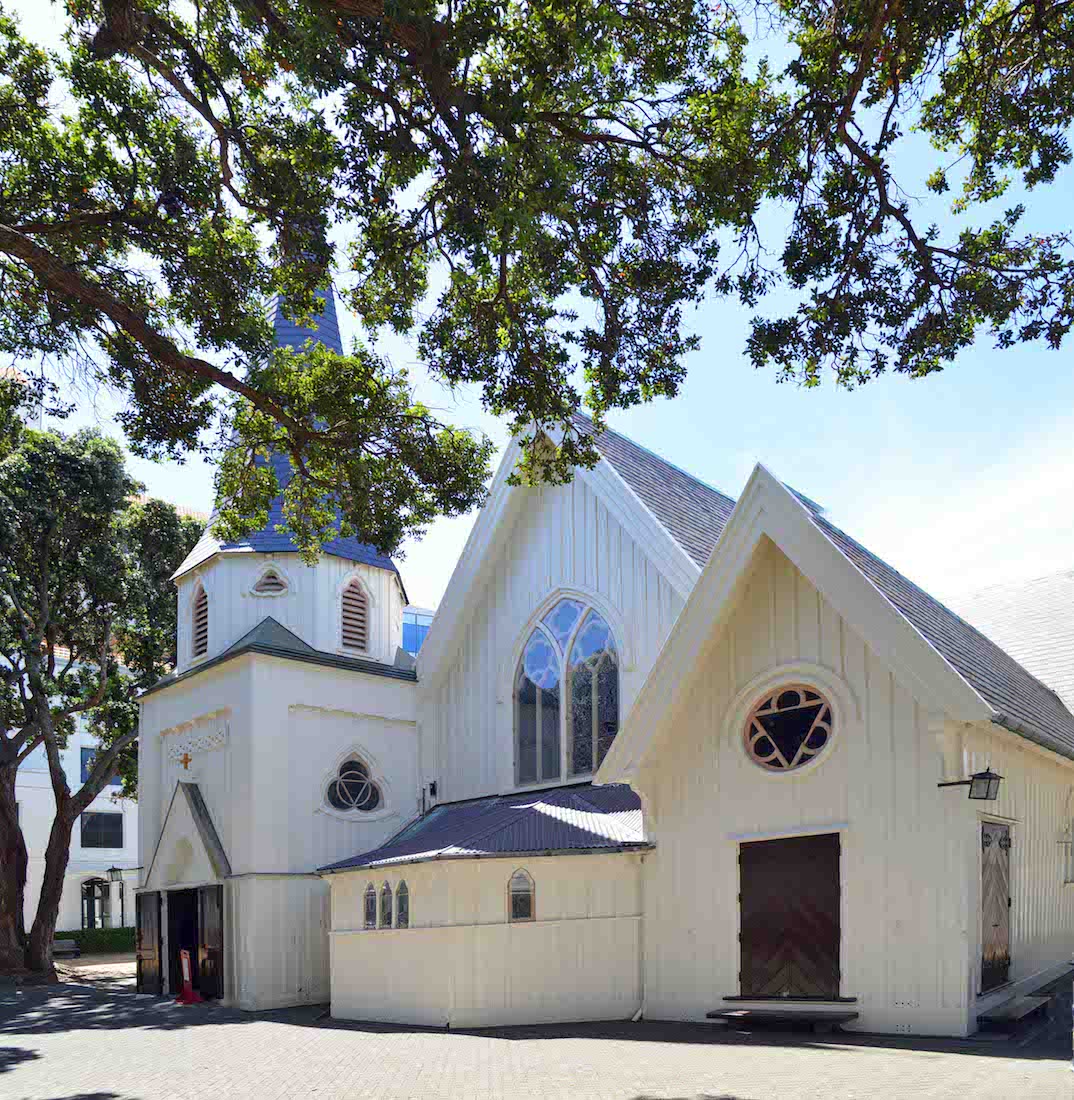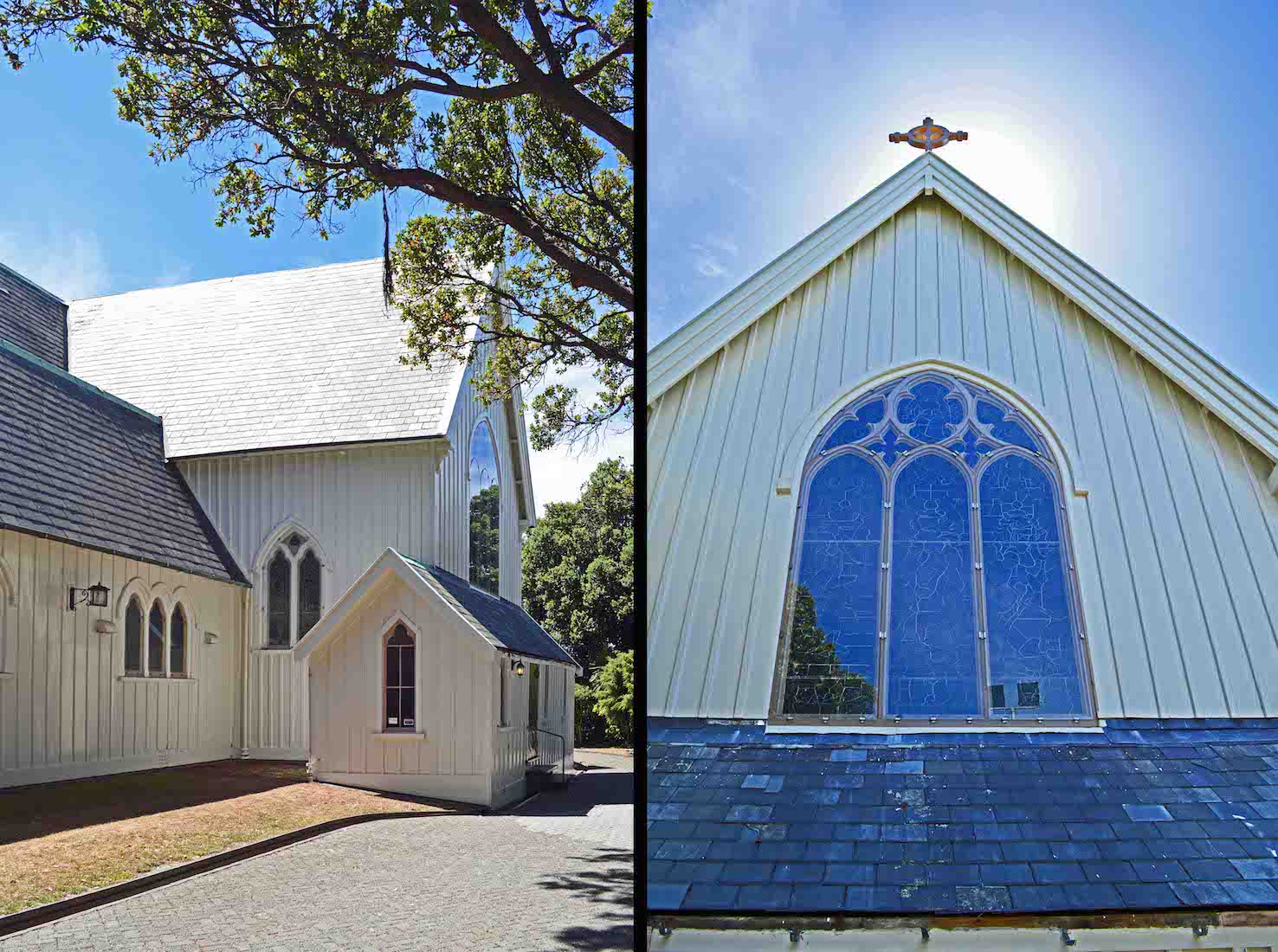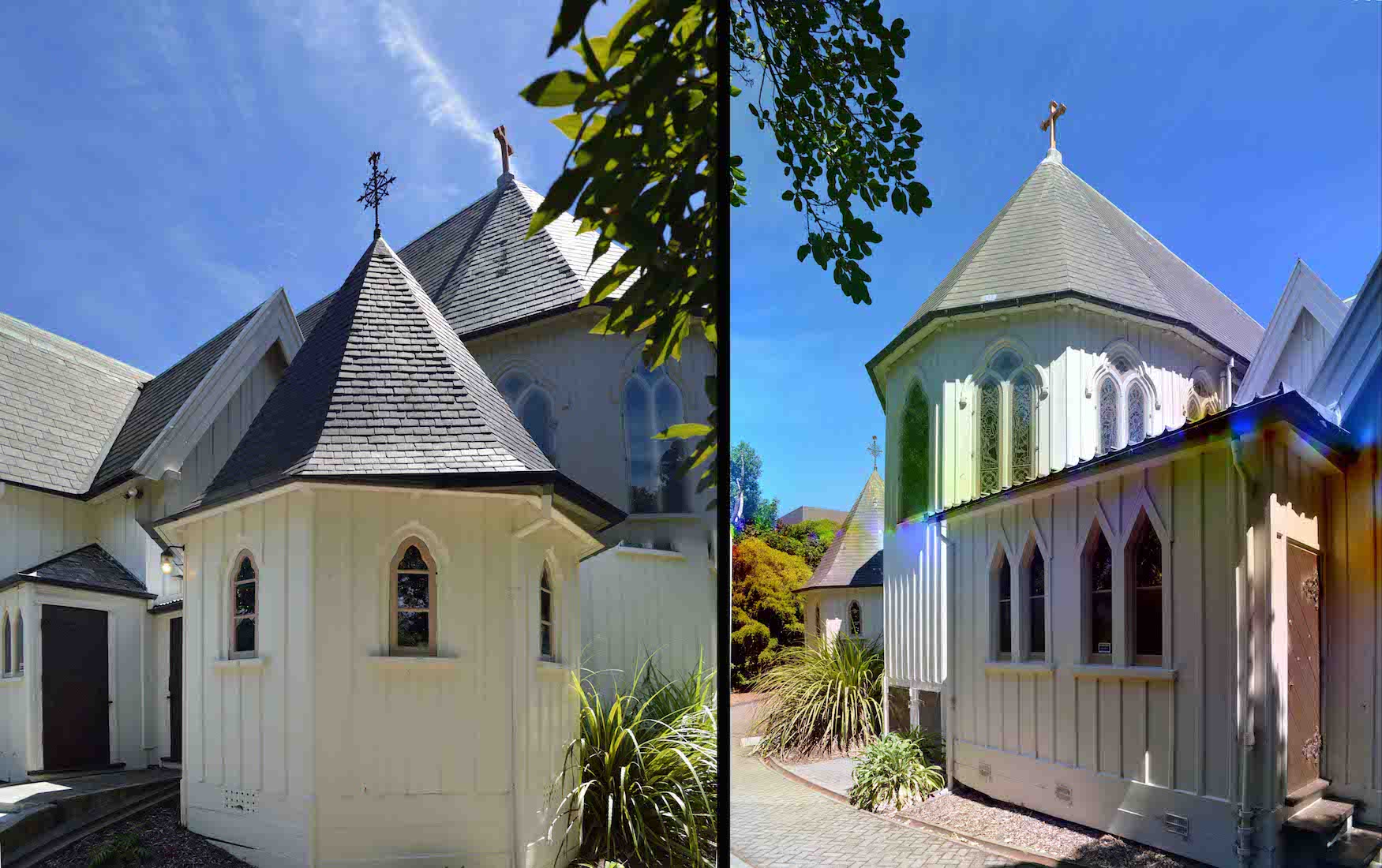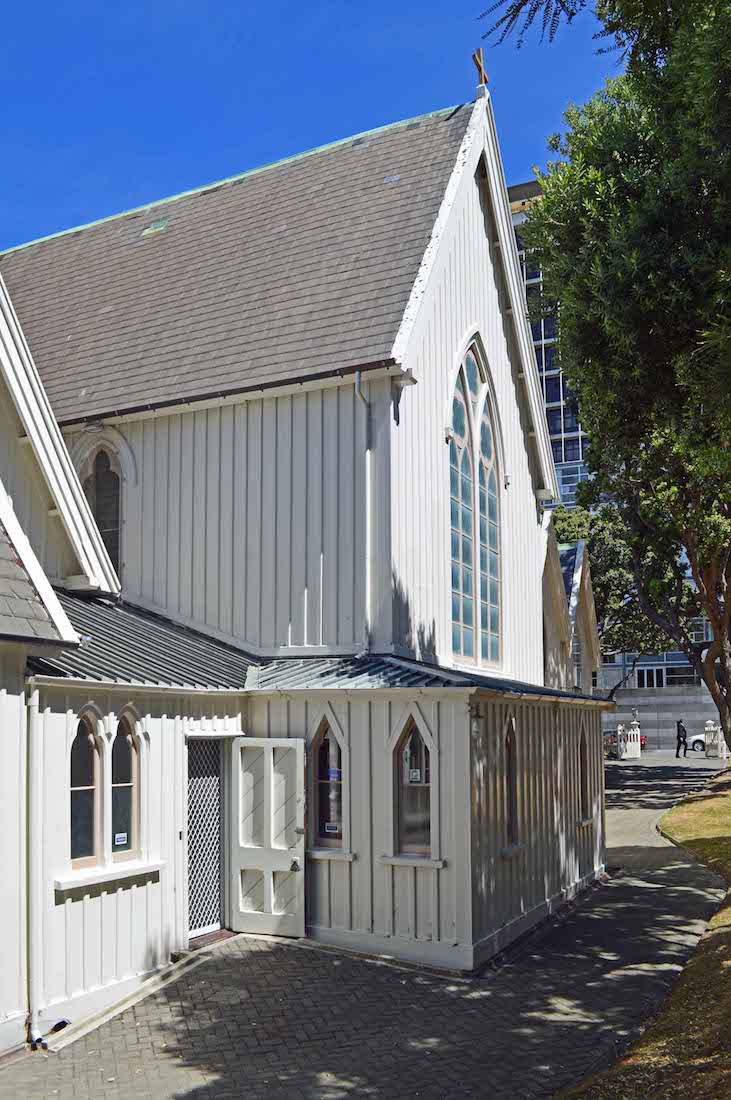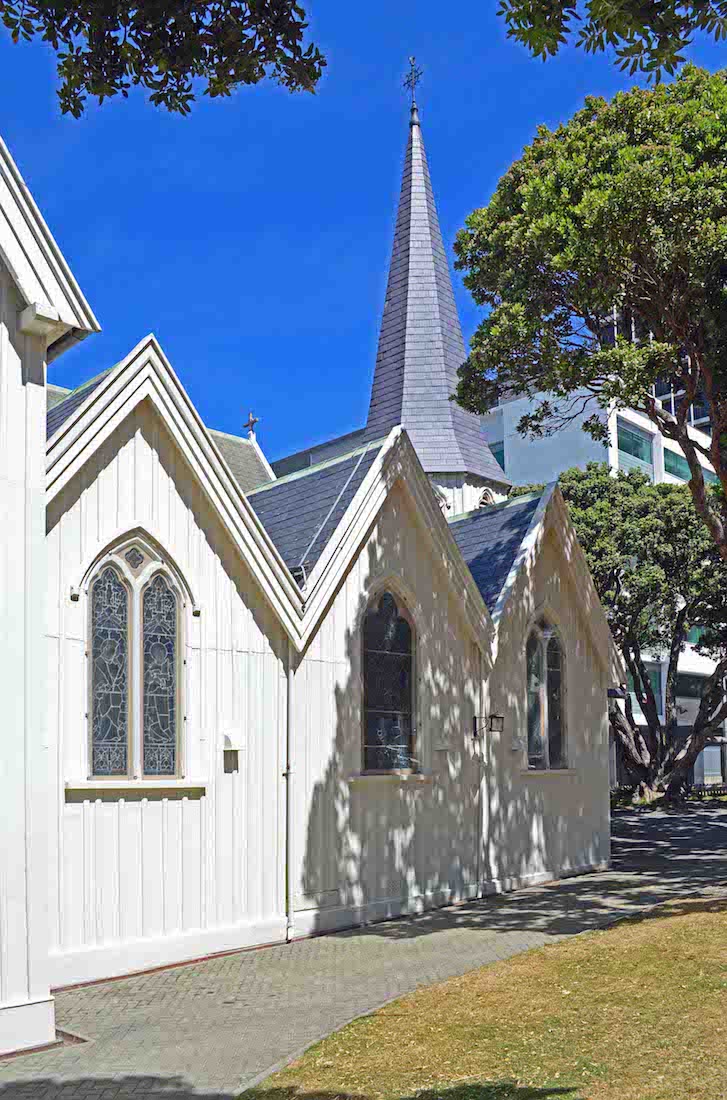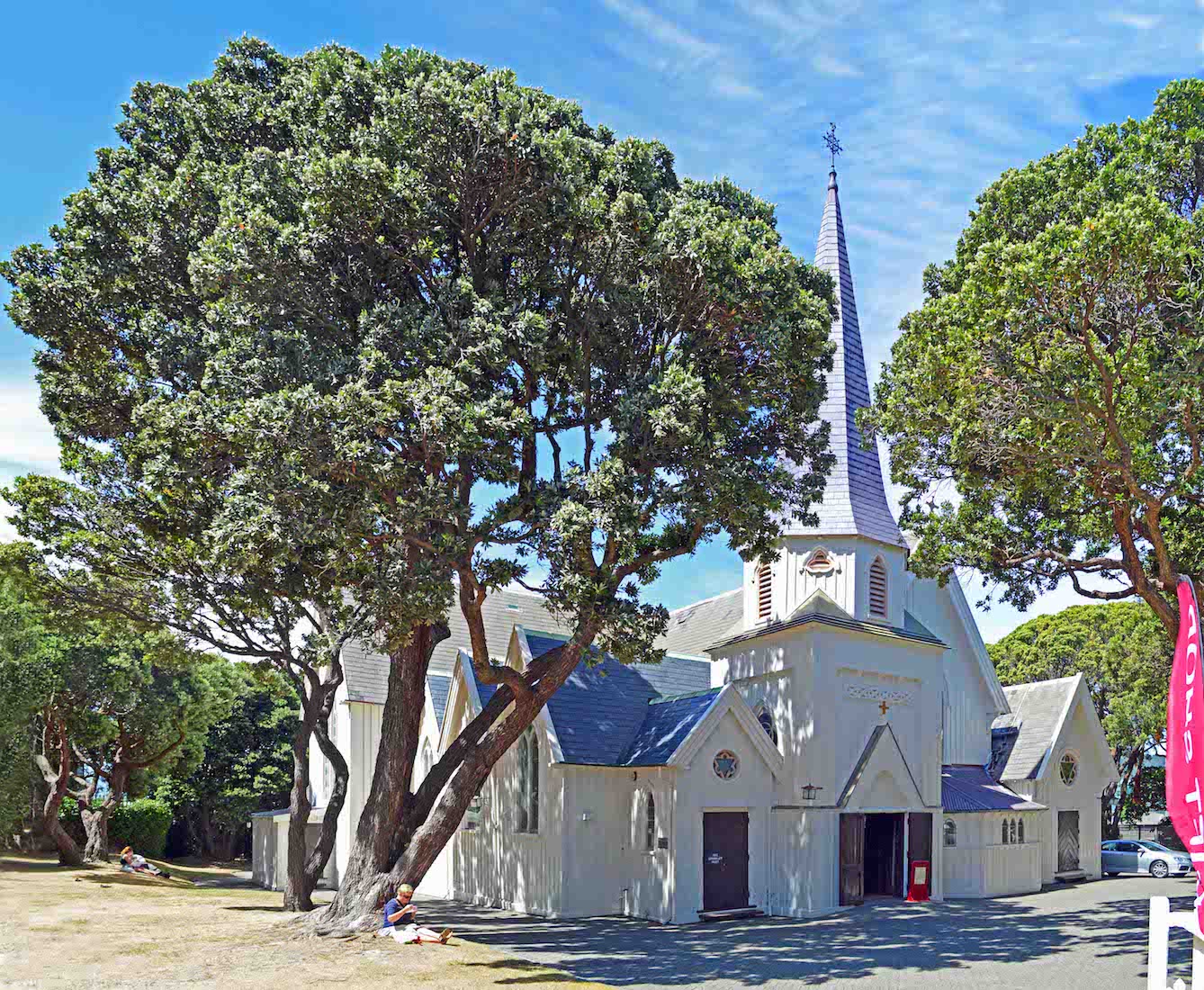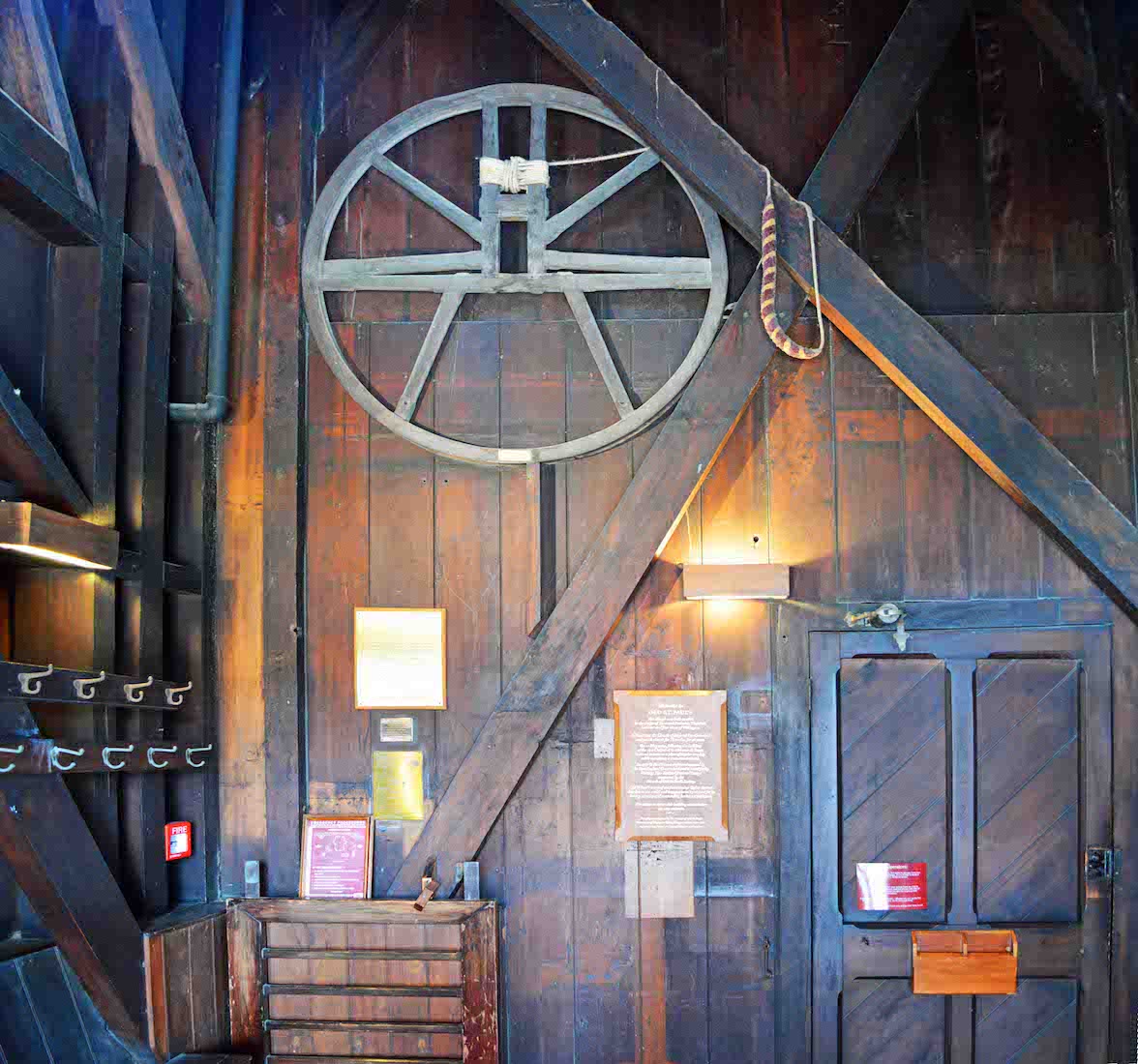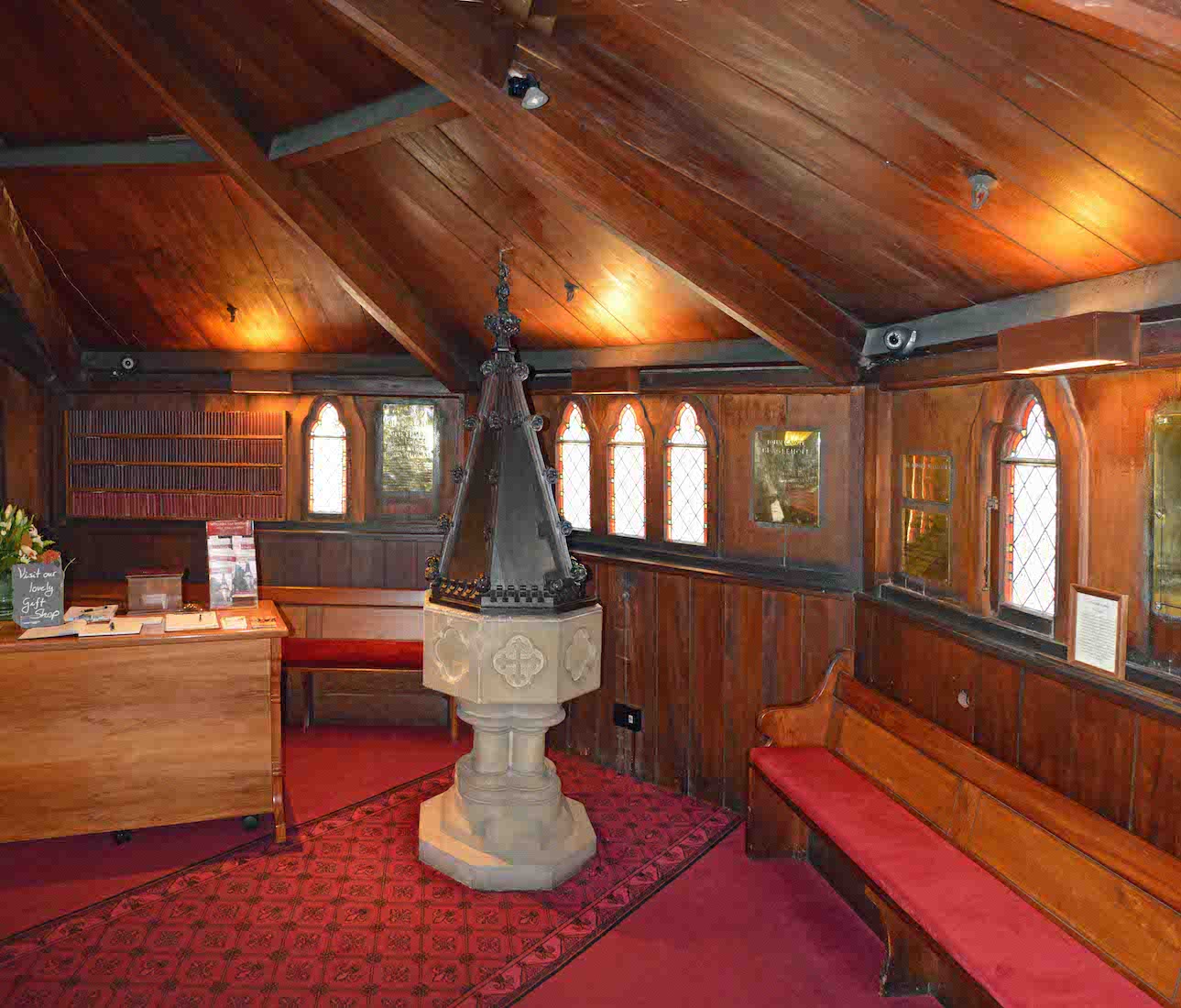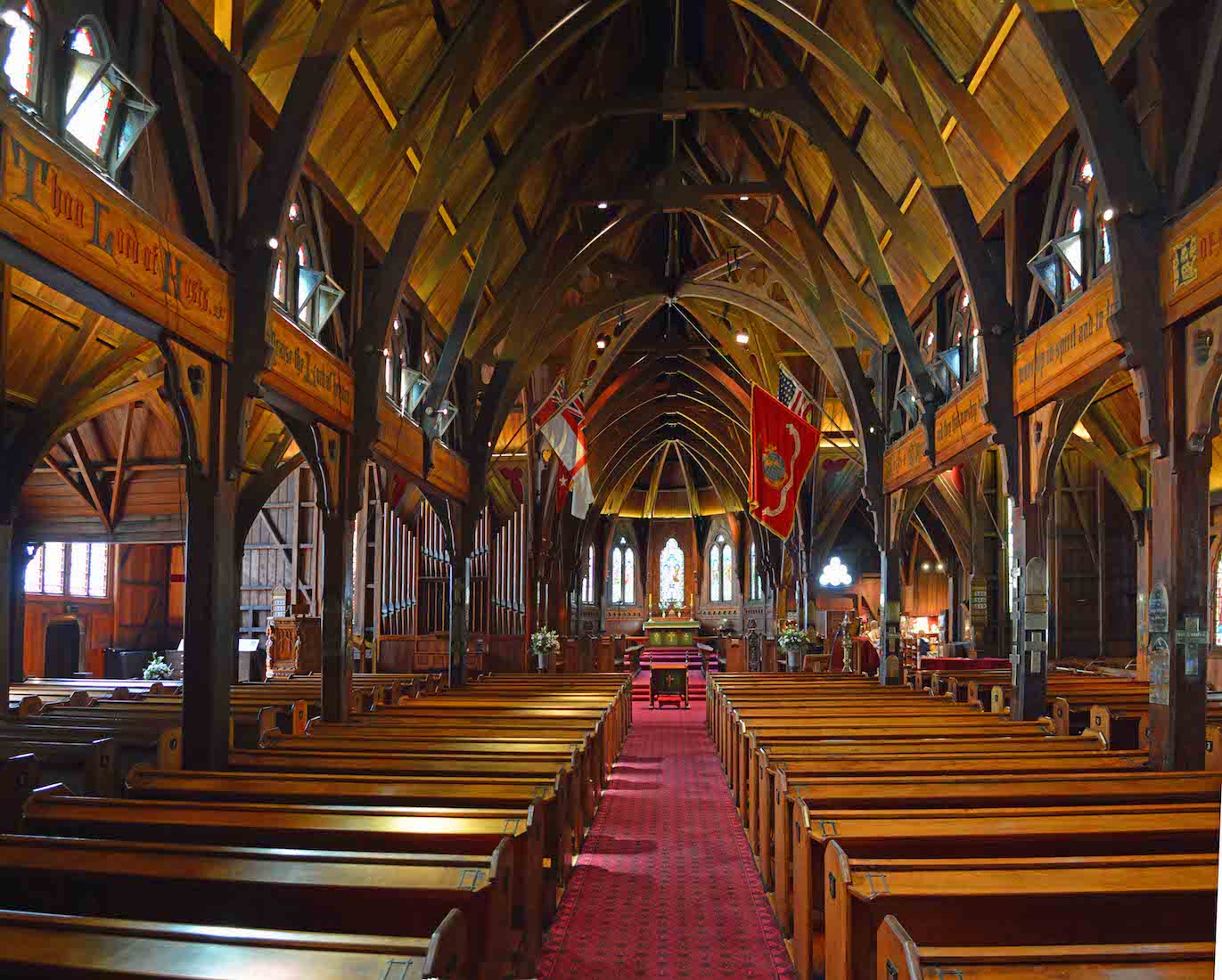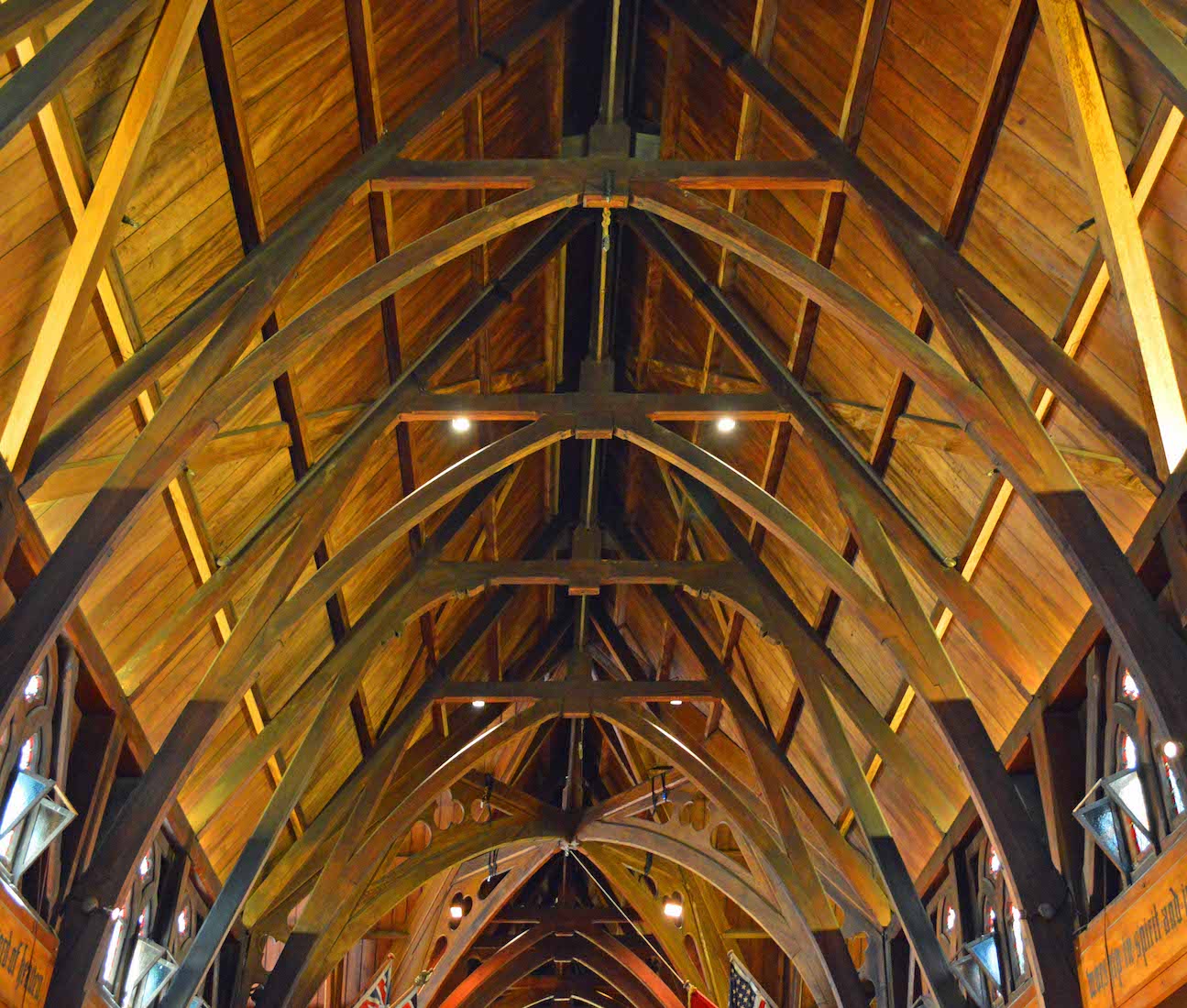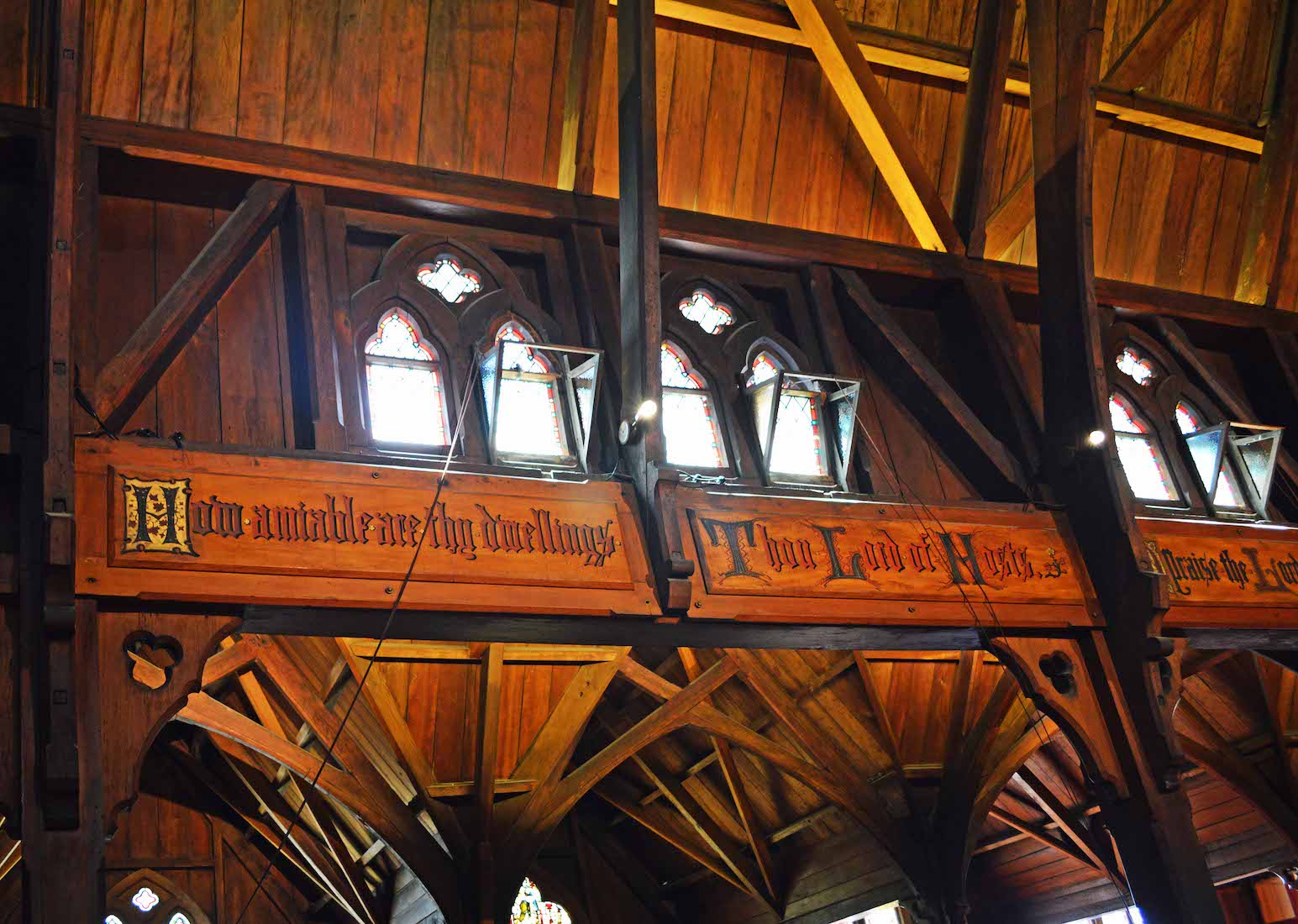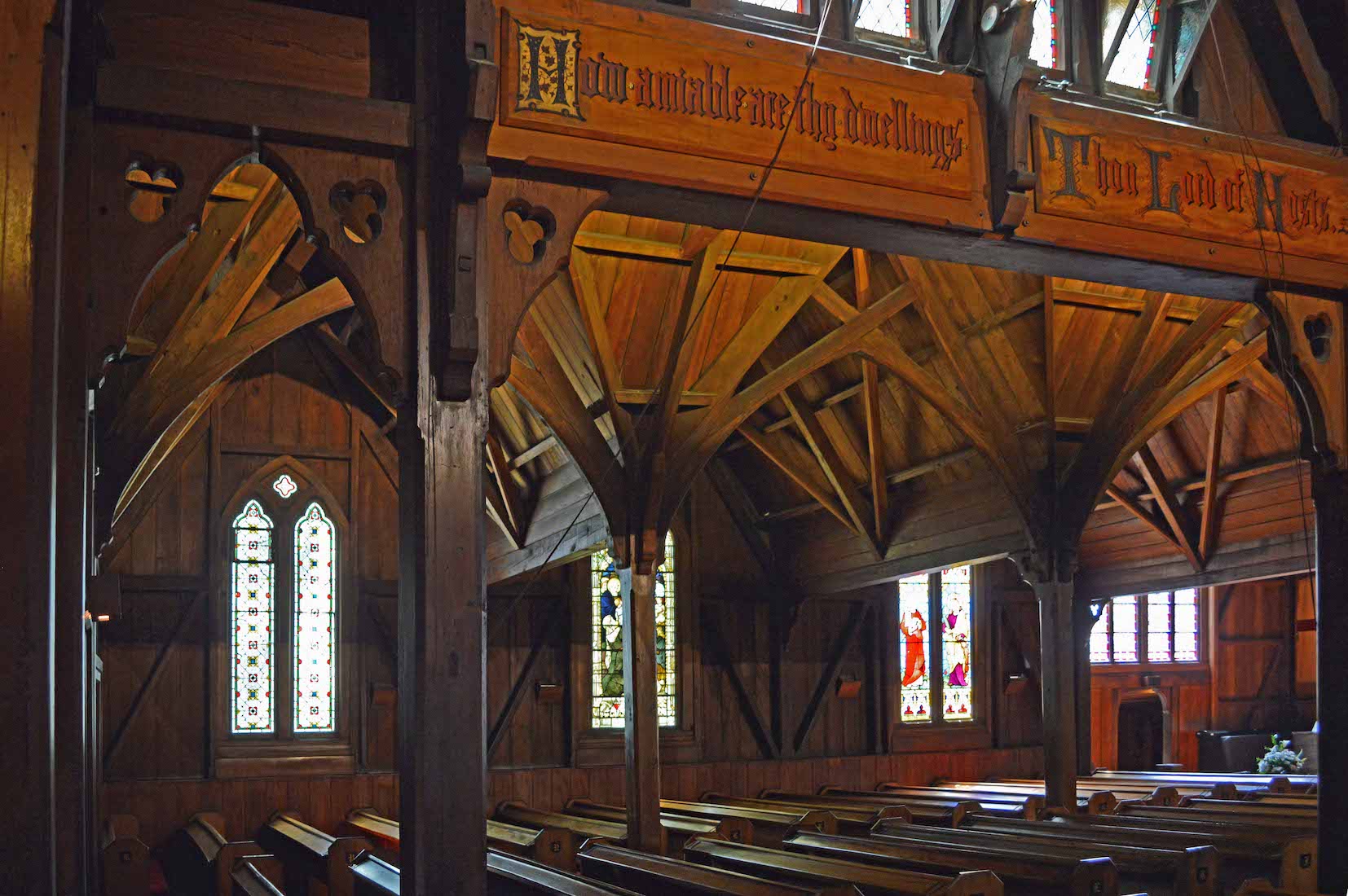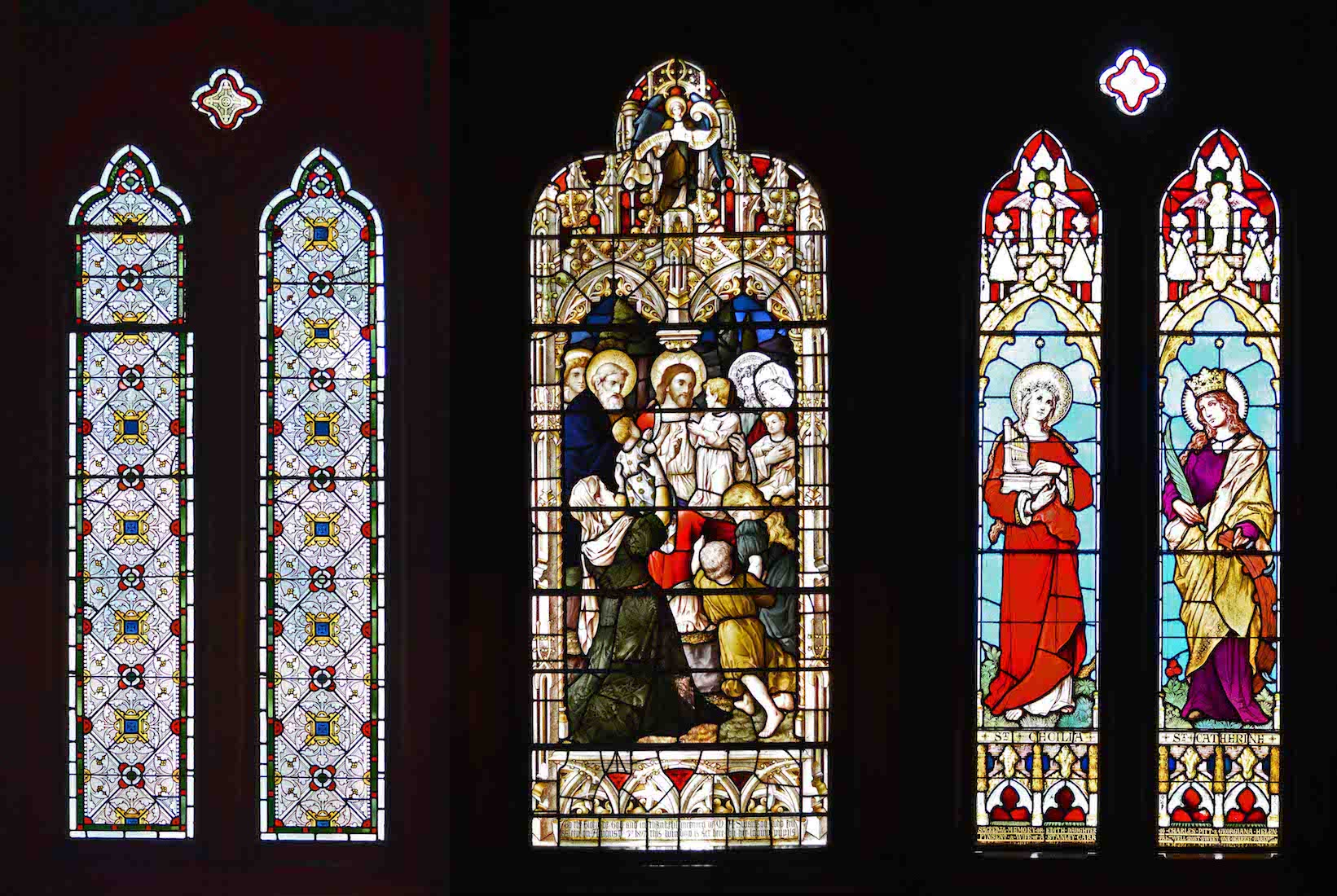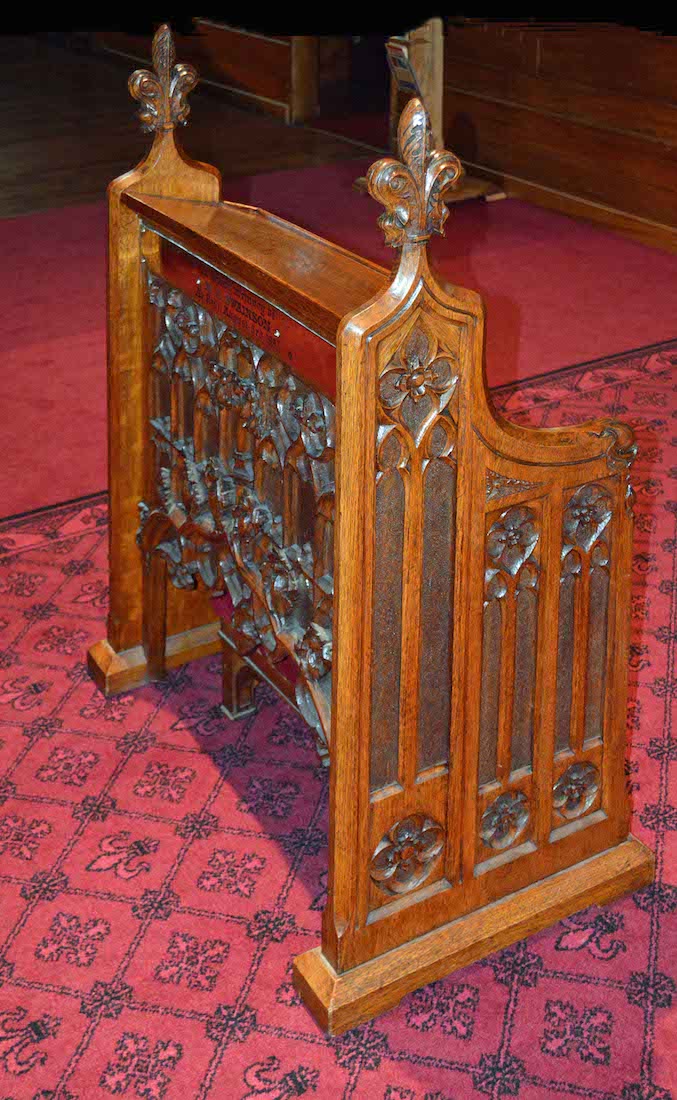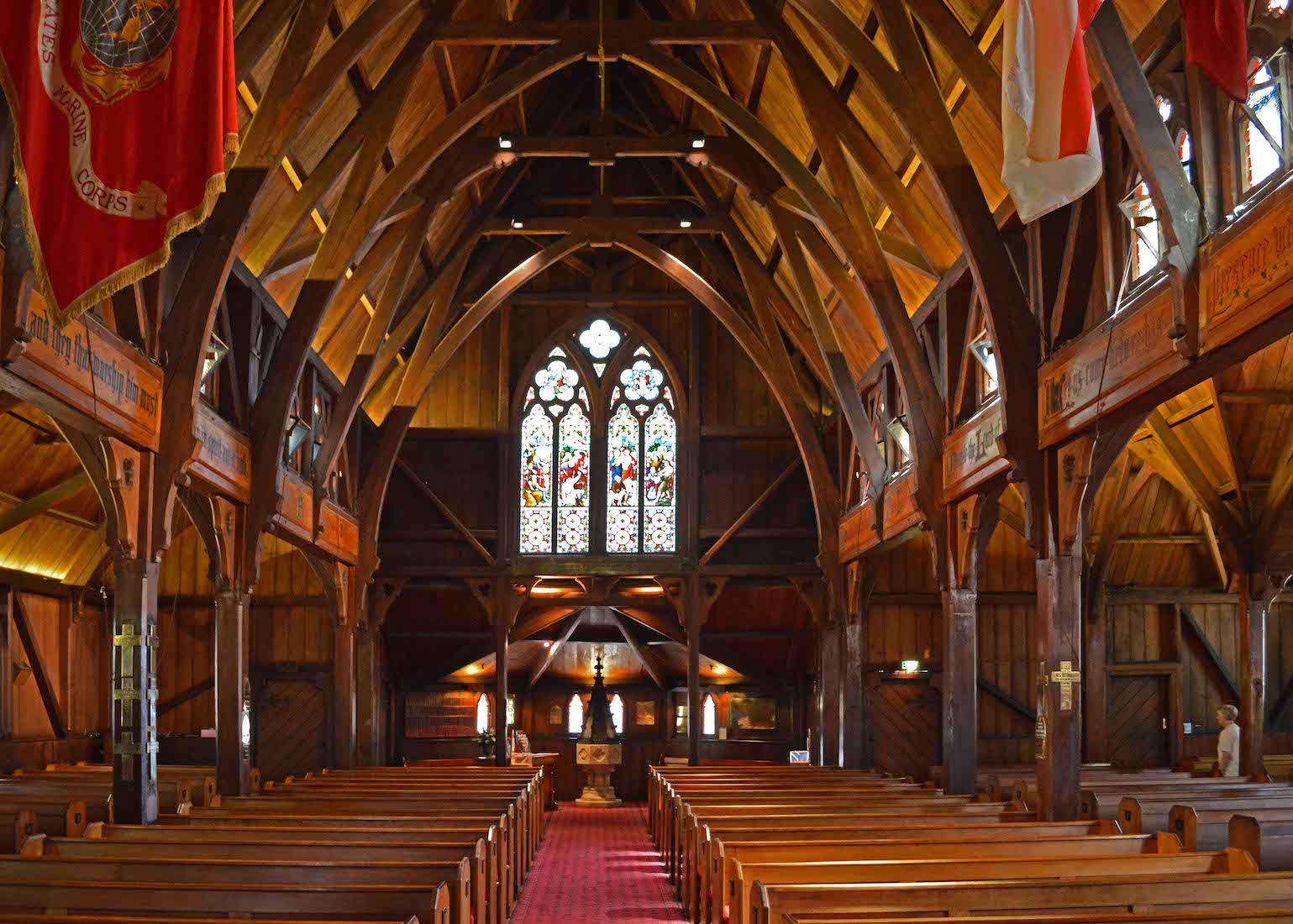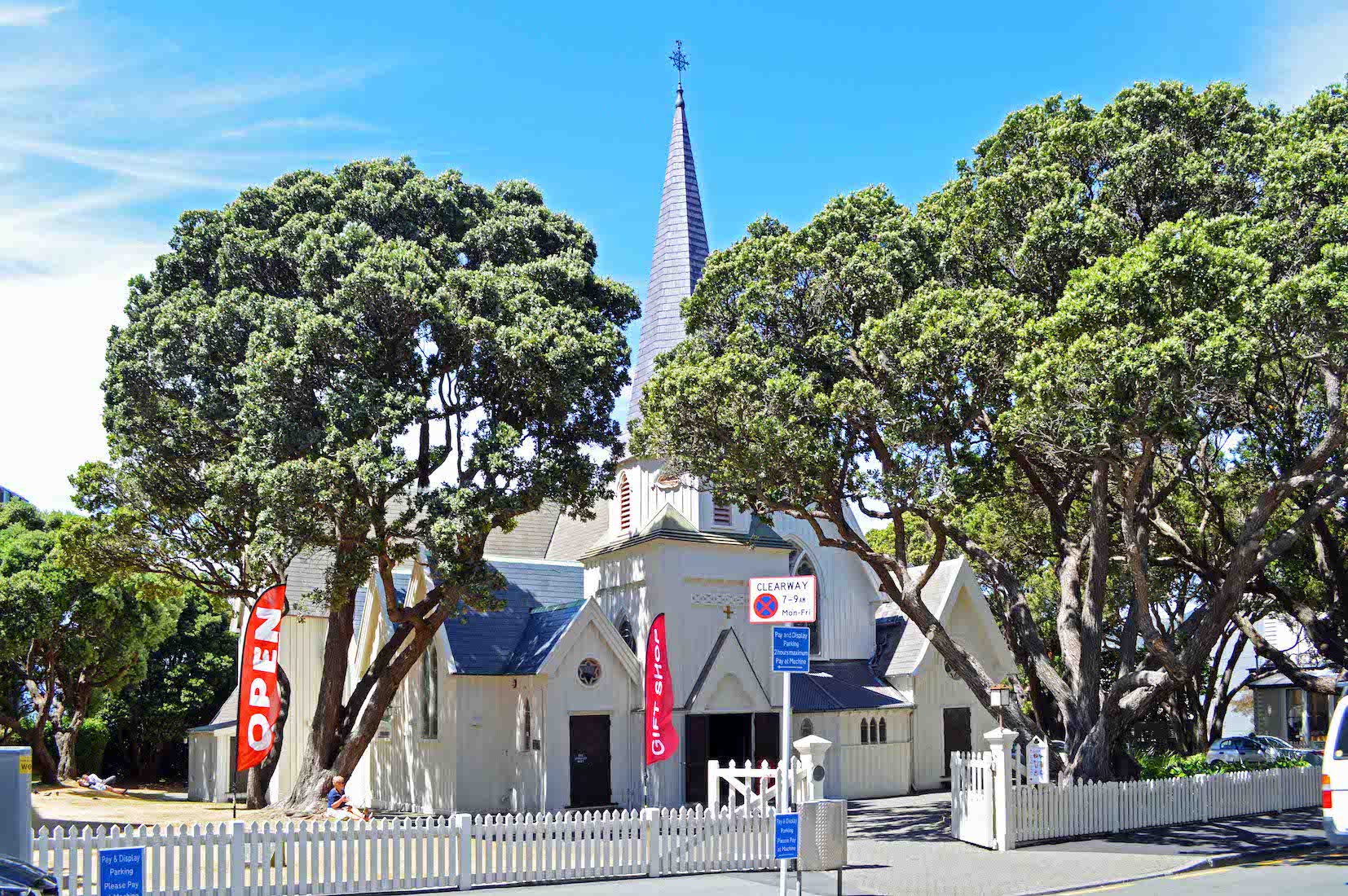
Old St Paul‘s (OSPs) in Molesworth Street, Wellington, is an historic old church which has had more than its fair share of controversy. Whether it is a Church, a Cathedral, an Ex-Cathedral or a Pro-Cathedral depends on your source, but it is a beautiful old building which I believe deserves a place on this website. PLAN
2. SATELLITE VIEW
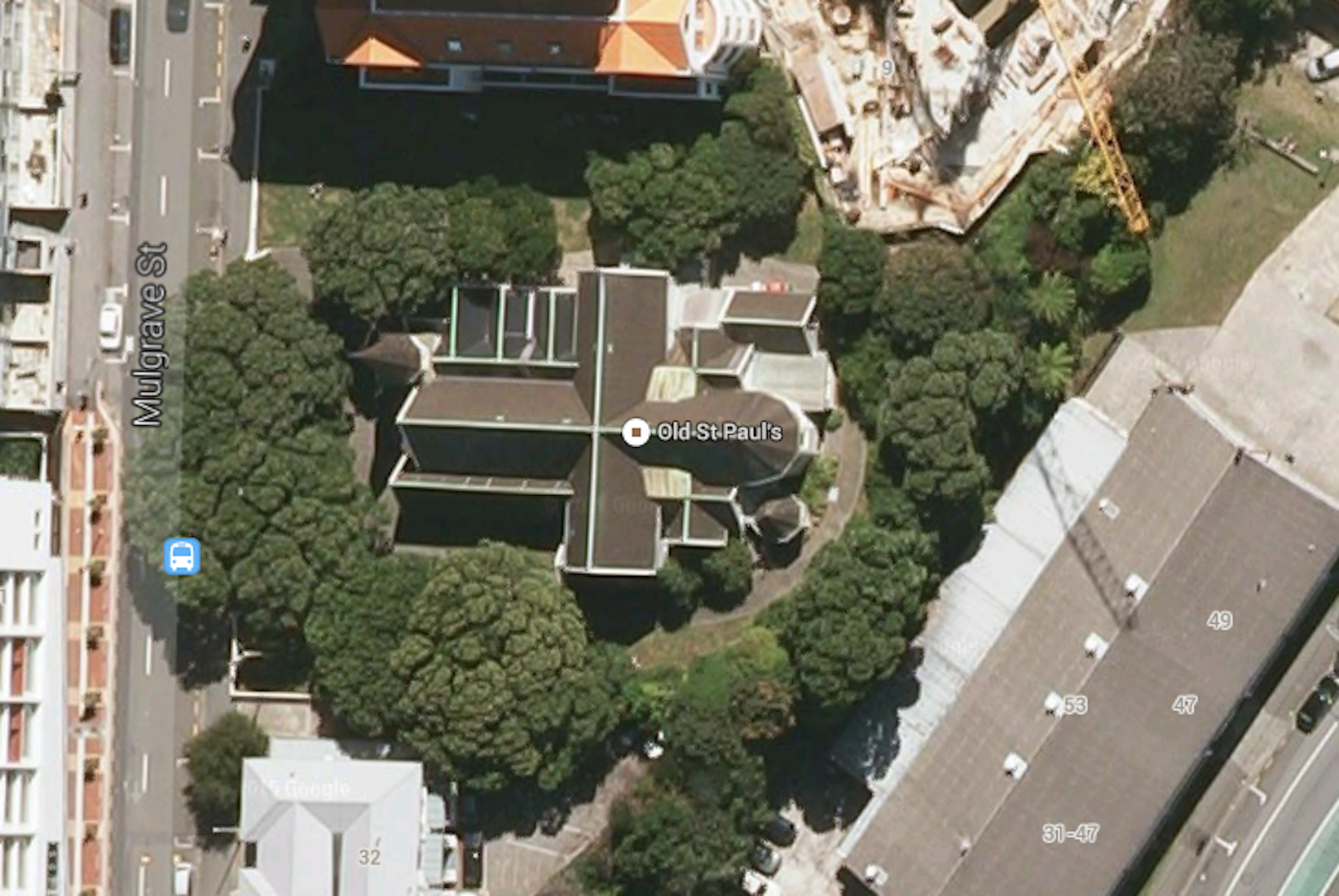
OSPs has a beautiful tree-lined setting. It has an east-west axis with the sanctuary facing geographic east, so our liturgical and geographical directions coincide. Basically it is cruciform in shape with an Eastern apse, a North Western bell-tower, and covered nave aisles which have different roof-treatments! There is a quaint little clergy vestry in the South Eastern corner.
3. WEST WALL
We begin our investigation of OSPs looking at the West wall. OSPs was built in 1866, and is arguably the finest example of timber Gothic Revival architecture in the world.
4. SOUTH WEST ASPECT
For almost 100 years OSPs was the Anglican Parish Church of Thorndon, and the (Pro-) Cathedral of the Wellington Diocese (depending on your source!). The new St Paul’s Cathedral opened in May 1964, and overnight OSPs lost its purpose and faced the threat of removal or demolition.
5. SOUTH WEST ASPECT: CLOSE
Strong public protest and lobbying by the Friends of OSPs and others saw the NZ Government purchase the building, restore it, and in 1970 reopen it under the care of the NZ Historic Places Trust.
6. SOUTH WALL AND TRANSEPT
As a consecrated, inter-denominational church, though one without clergy, OSPs has found a role as a venue for weddings, funerals, special services, concerts, exhibitions and cultural events. It is also one of Wellington’s top tourist attractions.
7. EAST WALL
At the South East corner stands a quaint Clergy Vestry, and following along the East wall we pass the rounded apse with its stained glass windows. Looking at the plan, it appears that OSPs just ‘grew like Topsy’ with a variety of additions. Today this adds to the charm of the building.
8. NORTH TRANSEPT
The North transept was built in 1874, six years after the nave. The choice of building material was influenced by the abundance of local native timber, and also by the prevalence of earthquakes.
9. NORTH WALL AND TOWER
Continuing our walk along the North wall, the Bell Tower comes in sight. There have been bells in the tower of OSPs since 1867. The tower itself was built the year before as part of the original Church.
10. PREPARING TO ENTER
The land for OSPs was bought in 1845 By Bishop Selwyn, the Bishop of NZ. Plans were drawn up in 1862 by Rev Frederick Thatcher, an English born architect who later trained as an Anglican minister.
12. BAPTISTRY
The Baptistry extension was built in 1891. The positioning of the Font symbolizes baptism as the way of entry into the Christian life, and into the Church.
13. BAPTISMAL FONT
The Font was made in England from white stone and a carved oak canopy. It originally stood under the West window, but was moved to its present position when the Baptistry extension was added.
15. NAVE ROOF
The word ‘nave‘ has the same root as the word ‘navy’, and looking up we are impressed with the similarity to an inverted hull of a ship.
16. ILLUMINATED PANELS
The side walls of the nave are adorned with these illuminated panels. These were gifted to the Church for Christmas in 1883 by Charles Barraud, a NZ artist of some note. They feature a style of lettering taken from 15th Century Italian manuscripts. The work is done in oils on rimu boards mounted on kauri.
17. NORTH AISLE
On the North side of the nave, each window is surrounded by its own little gable, directed out from the axis of the nave.
18. NORTH NAVE WINDOWS
OSPs is famous for its stained glass windows. Originally almost all the windows were plain frosted glass. These windows were then replaced one by one as memorials to prominent members of the Wellington community. Without much forethought as to their placing ... ! The central window shows Christ Blessing the Children.
19. PRAYER DESK
As we move across the nave, we come to this small carved prayer desk in the centre aisle.
20. WEST NAVE
Looking back down the nave we are again aware of the impact of the timber in OSPs. We note the flags, the brass plaques on the columns, and the baptistry beneath the West window.


